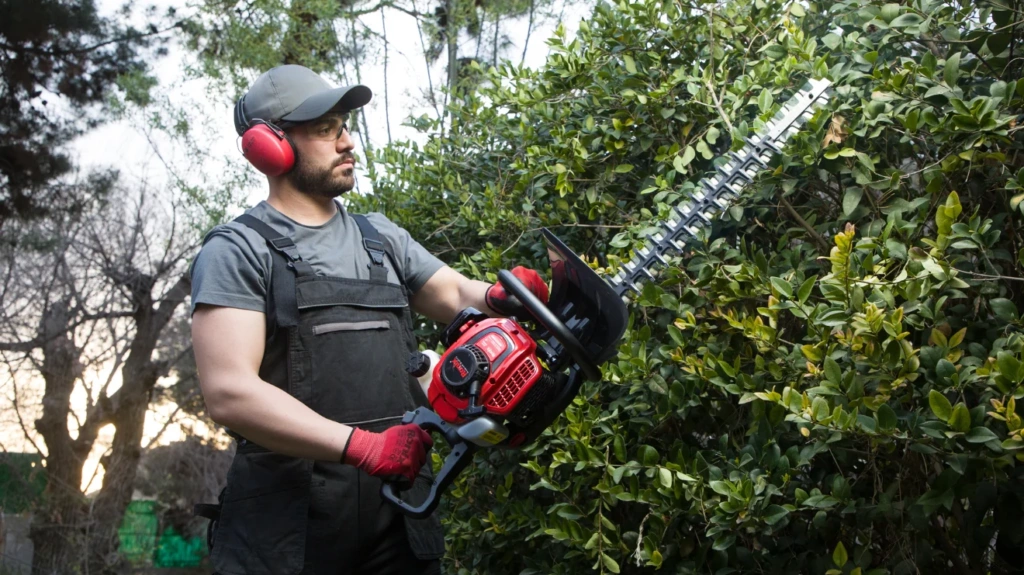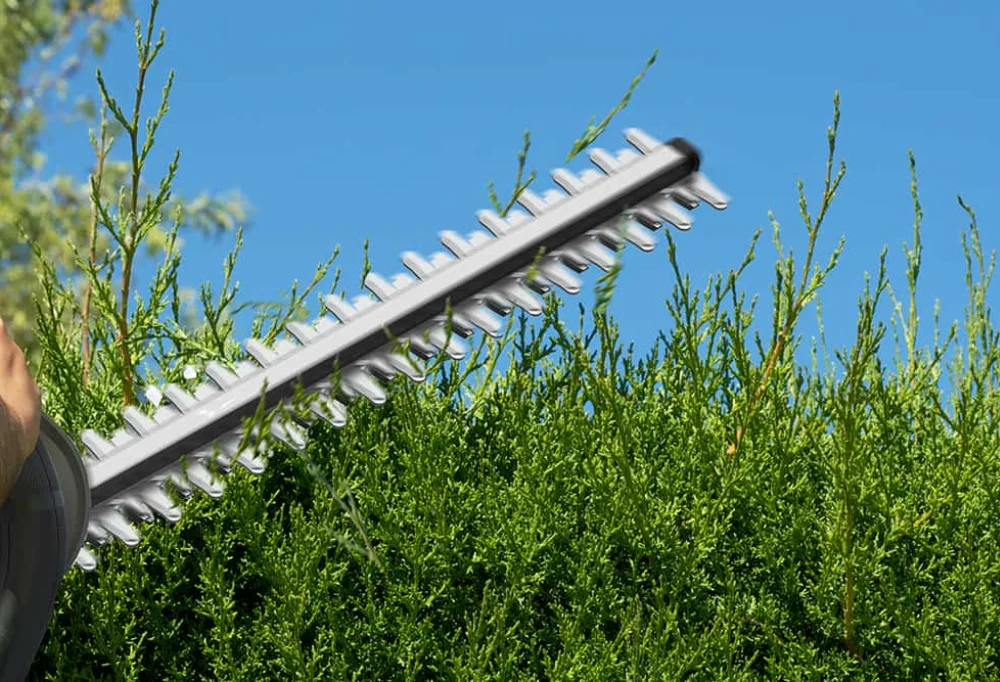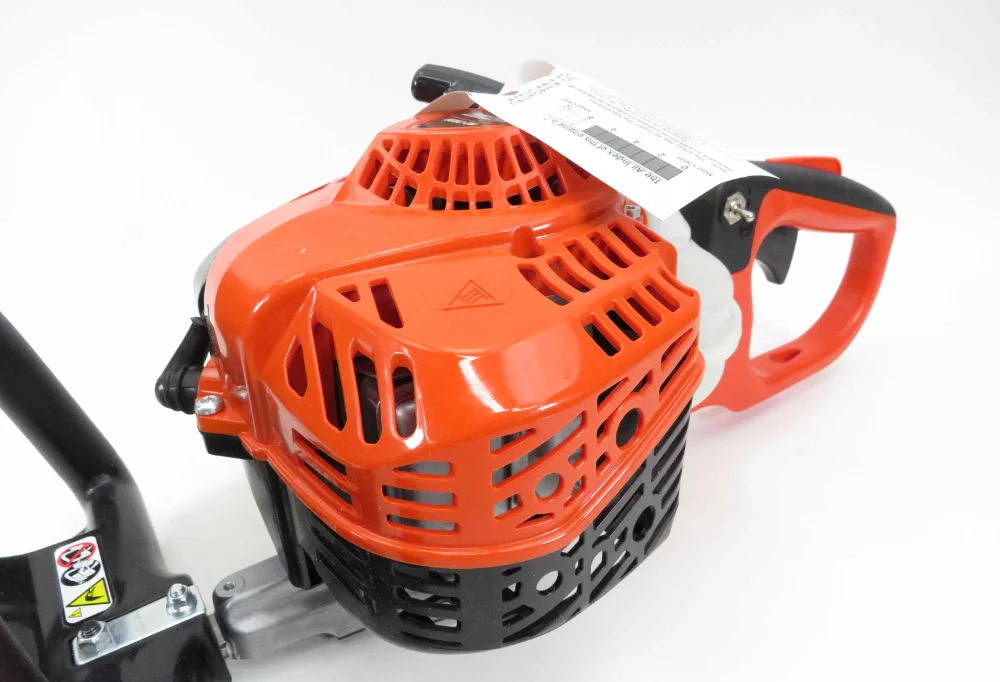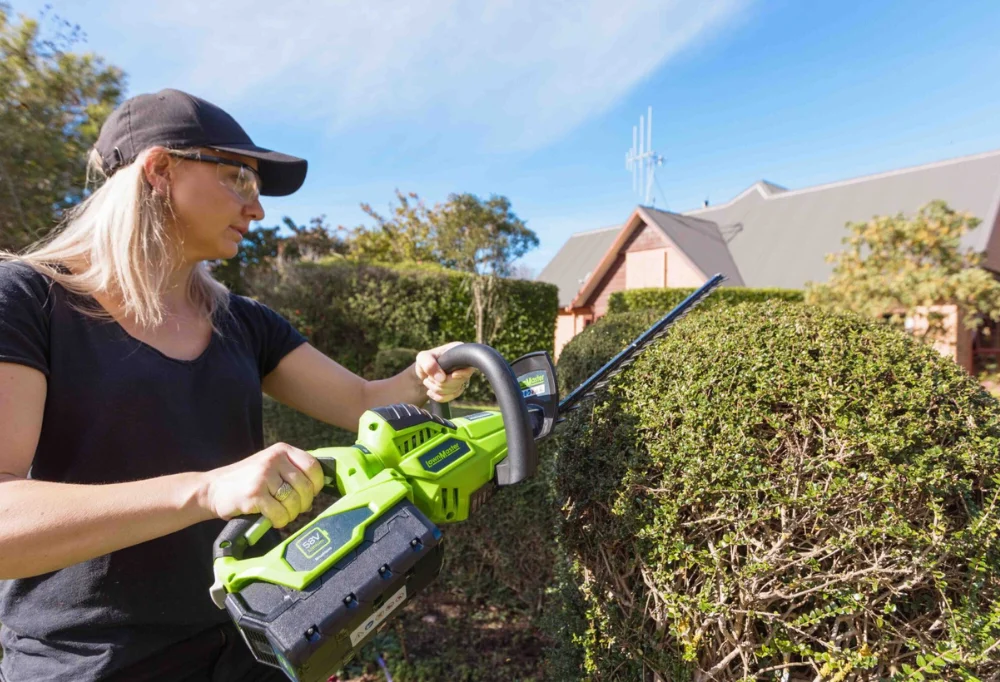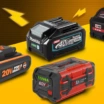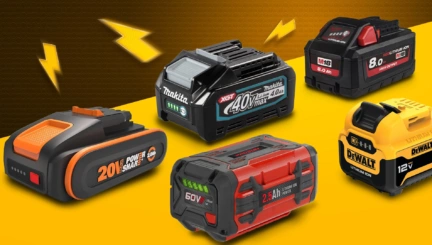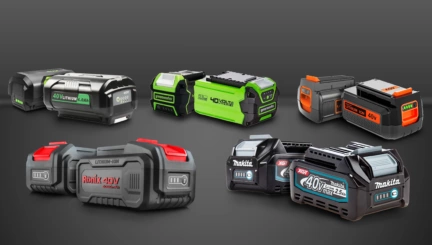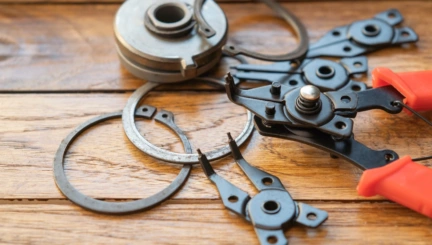- 14min
- 3718
- 0
Ever stared at your overgrown hedges and wished you could clean them up with a lightsaber? Well, hedge trimmers are the real-life equivalent (and a safer one at that), and they’re here to save your garden. You can use these tools to turn the messy hedges into works of art with their reciprocating saws. They come in a lot of different shapes and sizes, in electric and gas models, and in different lengths as well. By the end of this article, you’re going to be familiar with the best-rated hedge trimmers, best shrub trimmers, and all the different types so you can make an informed decision with the choice of your hedge trimmer!
But where do you get started?
Boost Your Business with Top-Notch Wholesale Hedge Trimmers
To answer this question, you need to know what to look for first. These are the factors that affect how useful your hedge trimmer is going to be:
- Runtime: This only becomes a concern in cordless and gas-powered models. You need to choose your tool based on how much trimming you’re going to do.
- Cutting Capacity: In hedge trimmers, cutting capacity is the thickness of branches you’re planning to cut. Depending on the tasks at hand, pick one that matches your needs.
- Hedge Height: This is an important one. If you have tall hedges, you can’t just rely on a normal model; you may want to look at pole hedge trimmers (which we will discuss more later in the article).
- Tool Weight: Since you’re going to hold the tool up for a while every time you use it, you need to go for something balanced.
Now let’s get a bit more specific!
Read More: Best Gas Hedge Trimmers
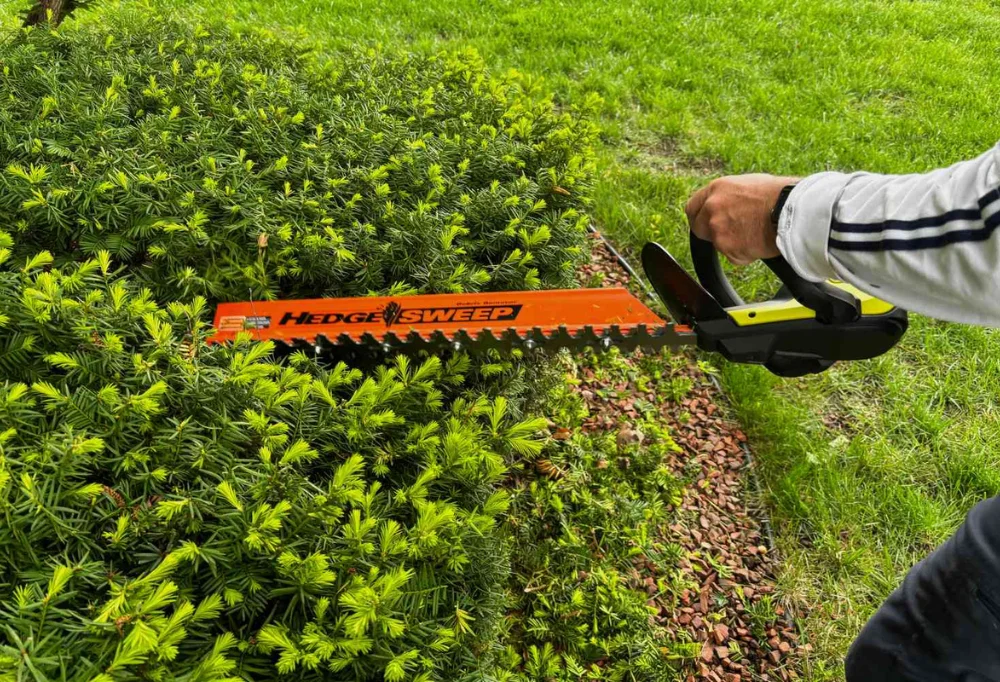
Best Electric Hedge Trimmer: Electricity Against Hedges
Electric models are the choice of many homeowners, and for good reason. They are quieter, they need less maintenance, and because they run on electricity, you don’t need any messy fuel mixing. The advantages of electric hedge trimmers over gas-powered ones don’t end there; they’re lighter than gas models and as a result easier to handle if your project takes long, or if you are working on something that needs to be accurate. Power is something else to think about.
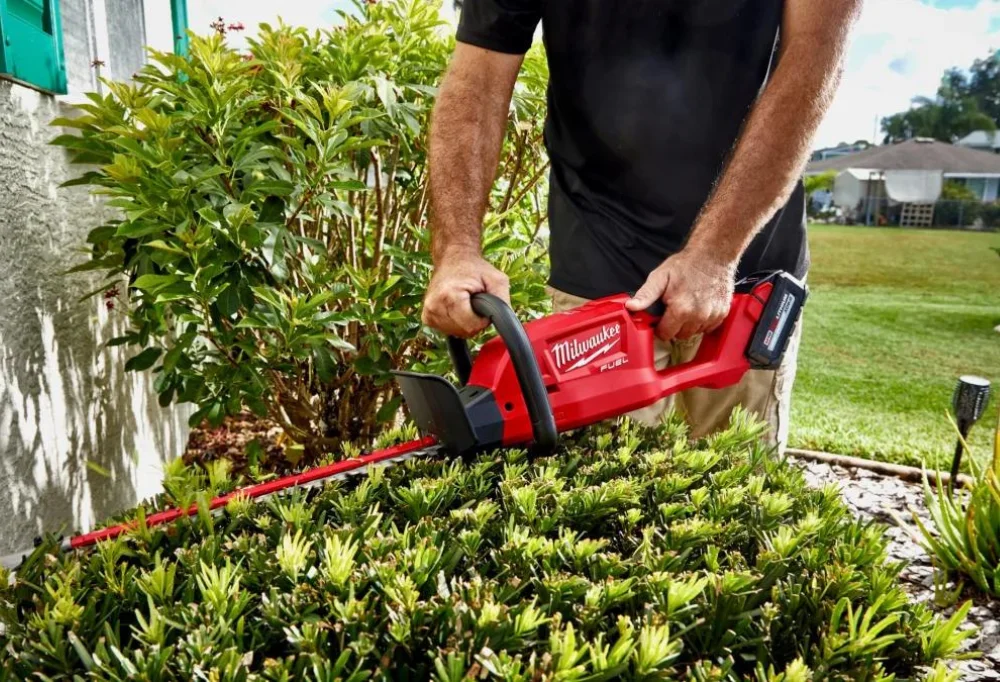
In the best bush trimmers, it generally ranges from 300 to a whopping 1000 watts. As always, a higher wattage means more power and, in this case, the ability to cut thicker branches and hedges. But you shouldn’t just focus on the wattage alone, you should choose the tool based on the size of the hedges you are dealing with. As a guide, 300-500 watts is enough for the smaller hedges, and 600-1000 watts is usually enough. And lastly, blade length and tooth spacing. Longer blades (16-24 inches / 40-60 cm) can help you cover large areas quickly, and shorter ones (16 inches or less) give you great control for shaping the hedges.
Best Corded Hedge Trimmer: Continuous Power
If you need uninterrupted power, you’ve come to the right place. You have a direct connection to an outlet, so no battery or fuel anxiety. Corded hedge trimmers typically have higher wattages than cordless models, which means more power. This makes them perfect for tougher tasks. They are also more affordable and cost less than cordless models. Another advantage is the corded tools’ weight. Even though some of them are heavier because of the motor and the cord, they at least may feel better because there’s not a bulky battery to limit your movement (but the cord can still very much be the limitation in some situations).
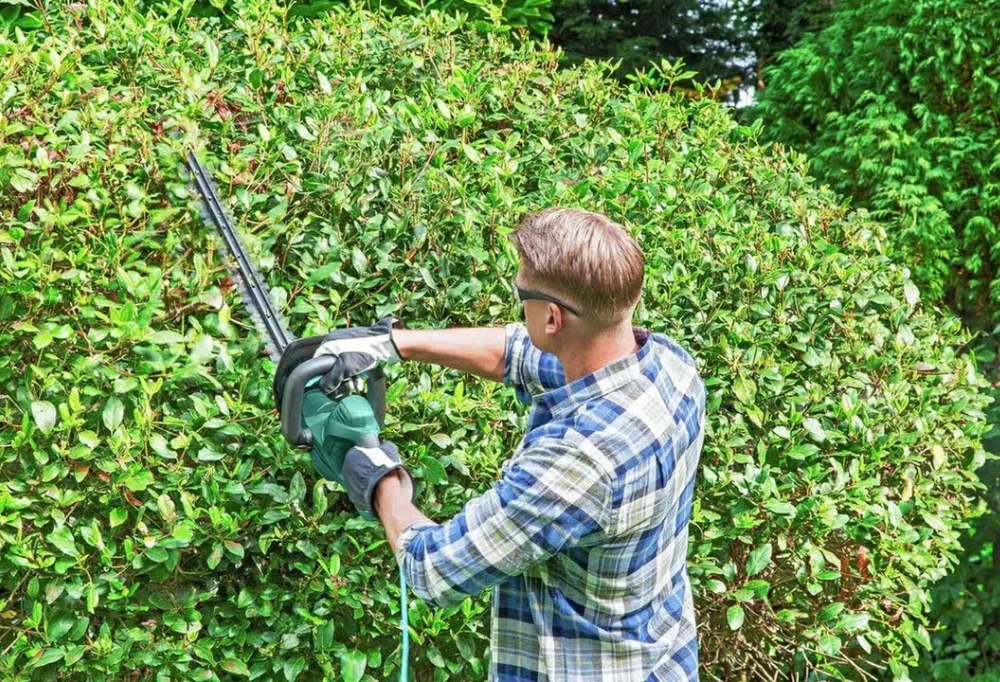
So, after all this, when should you go for a corded one?
- If you have large, overgrown hedges to deal with.
- If affordability is your priority.
- If you don’t want to deal with battery charging
- And lastly, if you want a lighter weight.
Best Cordless Hedge Trimmer: What’s an Outlet?
For most homeowners, the cordless models are basically the balance between power and portability you’ve been looking for. You have a rechargeable battery in this tool, letting you to just go around cutting stuff without having to worry about a cord. In cordless hedge trimmers, there are two numbers you should pay attention to:
1. Voltage: This is what shows how powerful your trimmer is. For hedge trimmers, the number usually falls within the range of 18 to 40 volts, based on the model you pick. Naturally, the 18-24 volt trimmers are better for smaller hedges, and the higher-voltage models are the ones you choose for thicker branches.
2. Amp Hours: An equally important number, it’s the amount of battery your tool has. The more amp hours, the longer your tool will work before needing a recharge. If you need to trim for longer periods of time, go for a hedge trimmer with a higher Ah.
The most important advantage a cordless hedge trimmer gives you is freedom. With one of these tools, you’ll be freer than an American eagle, moving everywhere and cutting everything (well, at least till the battery runs out).
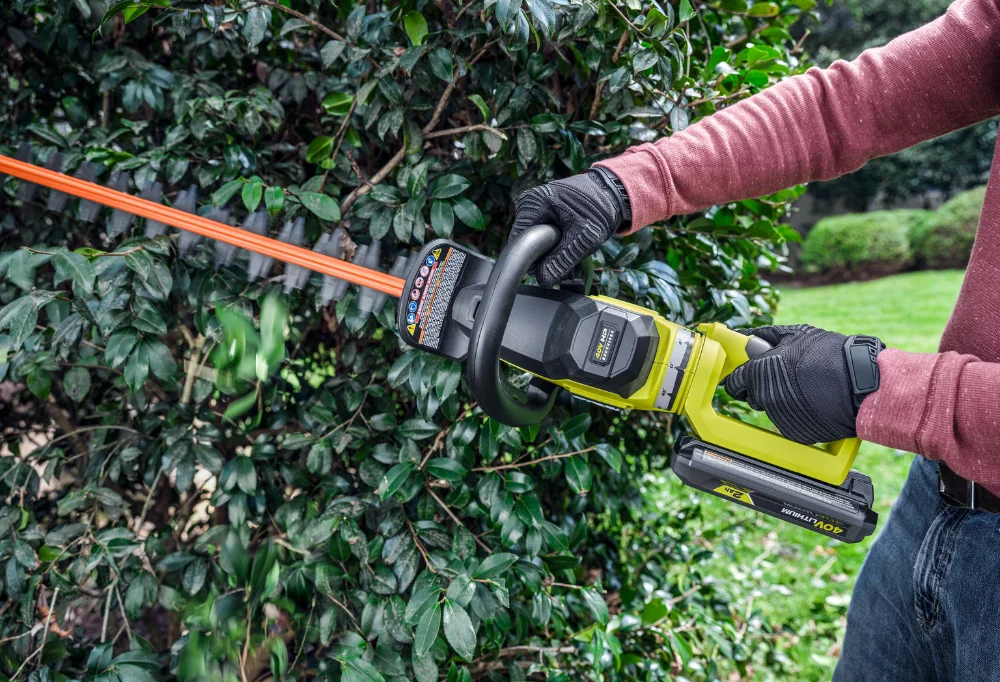
They’re not perfect though, battery life can be a worry, they’re not good for large hedges, and they’re not the strongest option. But hey, technology is getting better every day!
When would a cordless model be ideal?
- If you hate tripping over cords (who doesn’t to be honest).
- If you’re dealing with small to medium-sized hedges.
- If you have a large yard without having access to an outlet.
- And if you like quiet things.
Best Gas Hedge Trimmer: Raw Power
There are times when electricity just doesn’t cut it (no pun intended). That’s when you go for the muscle, the strongest among the hedge trimmers. Gas hedge trimmers are the professional’s tool, you choose them to get the job done. The thing that makes them so powerful is their motors, and these are the main types:
- Two-Stroke Engines: This is the most usual engine in hedge trimmers. They are lighter, smaller, and they’re easier to start. Gas engines are already a bit heavier, so you can use all the lower weight you can get. Two-stroke engines are not without their faults though, they use more fuel and as a result, they have more emissions. You also have a problem with fuel mixing, you need to mix the gasoline with oil, which makes everything a bit messier than it needs to be. With all said, the advantages of a two-stroke engine make it a good choice for home use (well, if you have a home with a huge yard).
- Four-stroke Engines: These are mostly used in lawnmowers, but can be found in hedge trimmers too. They’re much quieter and have better fuel efficiency. No fuel-mixing shenanigans too, just get the job done. Just keep in mind that they’re definitely heavier and more expensive.
You should pick one of these engines based on what you think you’re going to use the trimmer for.
Gas-powered hedge trimmers give you the freedom to move wherever you want, just like the cordless options. That and the power make them popular, but they’re not all perfect. They’re REALLY noisy. Like in-need-of-ear-protection noisy. Your neighbors will curse your name if you use one of these in a residential area. So, have that in mind if you are picking one of them for your projects.
Keeping them up to the task isn’t the easiest either. Mixing gas and oil, changing or cleaning air filters, and replacing spark plugs, all of these can be a pain.
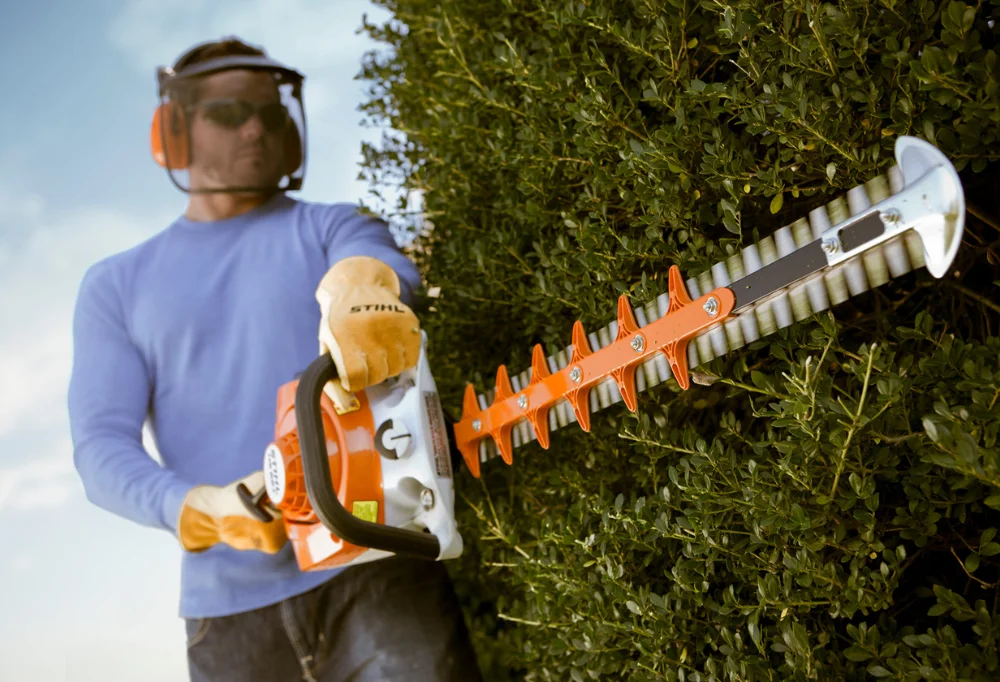
After all, for our last contender, who should go for one of our gas-powered friends here?
- If you have hedges that will make an electric trimmer cry.
- You need a lot of power.
- You need the freedom (don’t we all?).
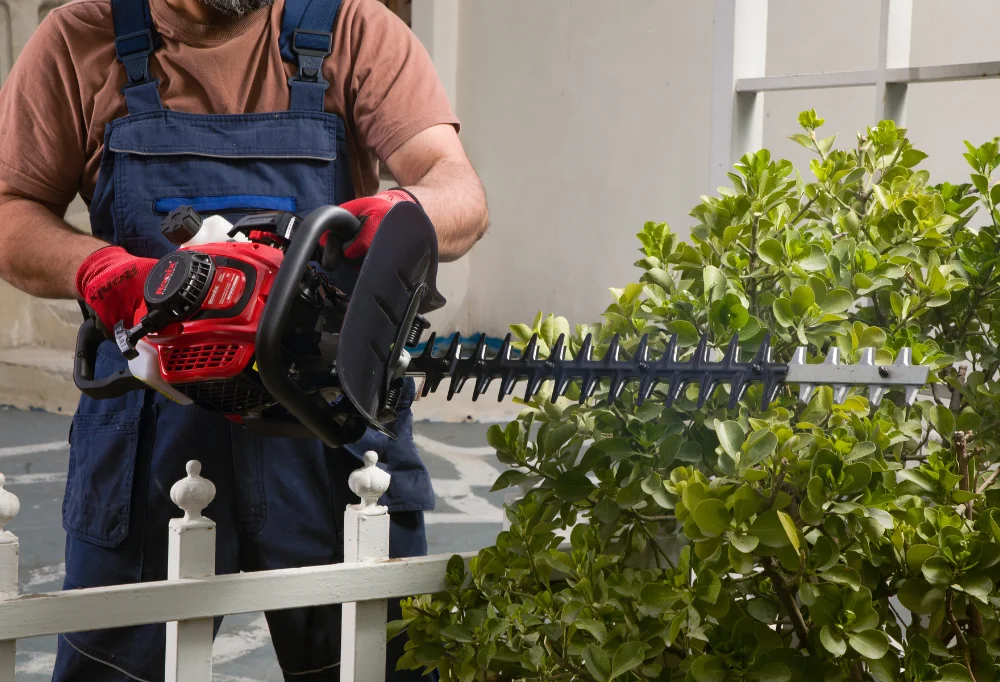
Now if you are in the market for a powerful gas-powered hedge trimmer, you may want to take a look at the Ronix 4965. It has a 22.5cc 2-stroke engine that can take on anything you may throw its way. It’s light, quiet, and comfortable to work with. It has a 70 cm blade too which helps with all hedges you may want to cut.
Best Pole Hedge Trimmer: Taller Than Shaq
Sometimes you are not dealing with one of those cute artsy hedges on the ground, you are dealing with mountain-like hedges that you couldn’t possibly reach (well, you could’ve used a ladder and risk falling). So, what can you do?
Ranging from 4 to 12 feet, the pole hedge trimmer with its extendable shaft is the weapon you pick to win against those tall hedges (and even some small trees). They come in both electric and gas-powered models, each with their own benefits and shortcomings.
- Electric Pole Hedge Trimmers: They’re quiet and lighter, but they’re mostly good for smaller and well-maintained hedges.
- Gas Pole Hedge Trimmers: Now these are the tall hedge slayers. They’re more powerful and better for those wild hedges that are thicker than your arms.
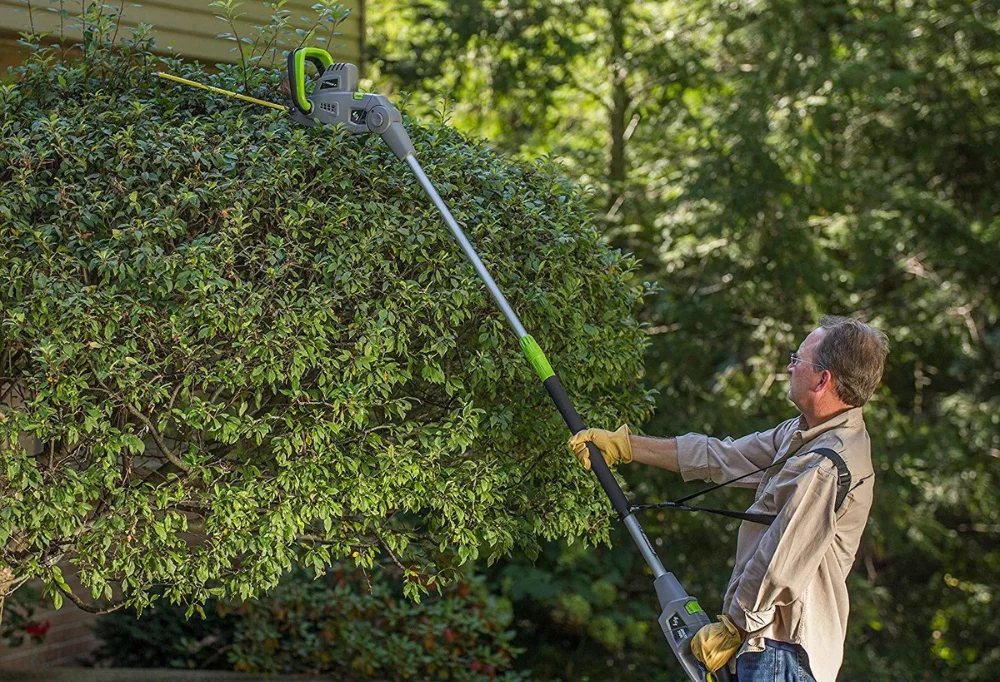
Okay, reaching those highs is great, but you also need control. Can’t go around with a literal reciprocating sword without being able to handle it. These are some of the factors that give you some of that control: an adjustable head that can bend and tilt, and a telescoping handle (this is why pole hedge trimmers are sometimes called “telescopic hedge trimmers” as well), these parts of the tool can be adjusted several feet to help you get that annoying branch on the top that’s been poking out for months. Comfortable handling is another one, since being tired may mess with your control. Plus, your wrists will thank you for a better handling trimmer.
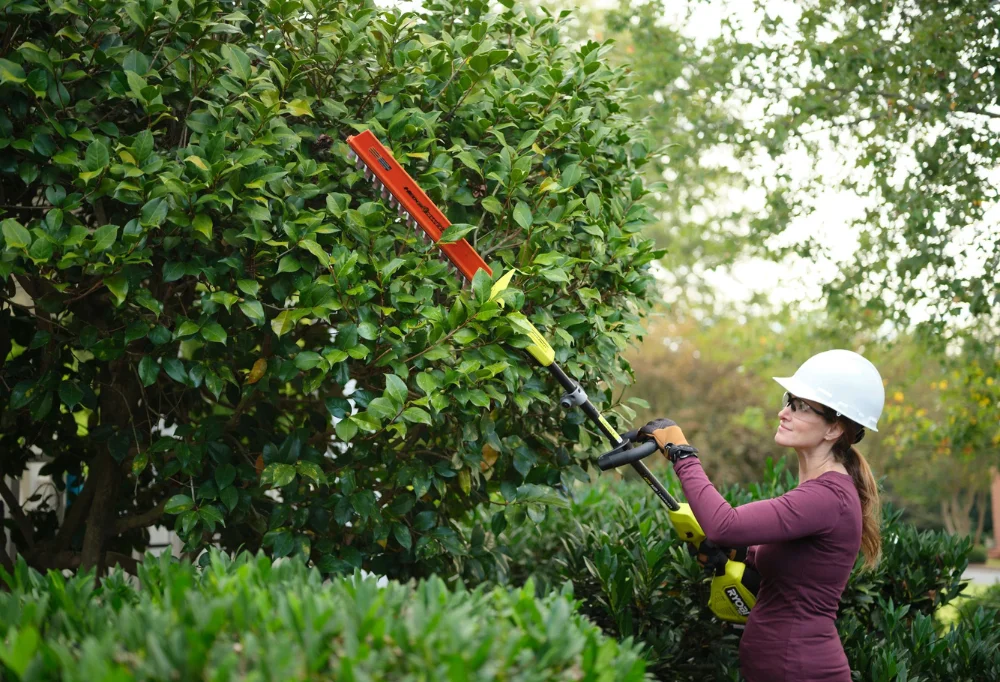
Best Hedge Trimmer for Thick Branches: Finally, A Worthy Opponent
Here’s where you need to get something that is up for the battle. Naturally, because it’s called a “hedge trimmer”, you may want to consider other tools if you want something just to cut branches. BUT that doesn’t mean they are incapable of doing such tasks, as we’ve already talked about. Here’s how to pick a good one:
Firstly, no cords. You’re already dealing with high and thick branches, so you shouldn’t need to be careful about a cord too. That leaves us with two options:
- Gas-powered: we’ve sung their praises enough already, and we’ve discussed the different engine types and all. Both engines can handle thick branches fine, but you should probably go for a bigger one (25cc or more) for your own peace of mind.
- High-voltage Cordless: Electric models aren’t as strong, but the 36-volt, or even better, the 40-volt trimmers can still pack a punch. Keep in mind that the battery may struggle because of how strong it is.
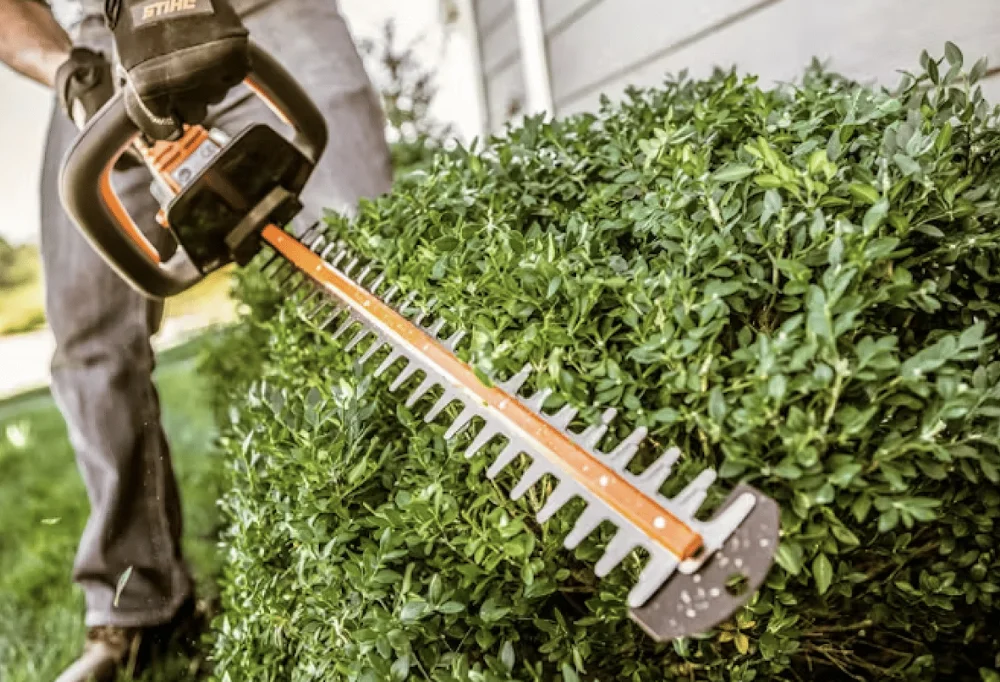
Another thing to be careful about is the blade. The normal blades we’ve got on hedge trimmers are perfectly fine for small branches, but for thick ones, you need tougher diamond-ground blades. Something that won’t break the first time you try cutting stuff bigger than a tiny hedge. The distance between the teeth needs to be wider too, so they can get those branches without getting stuck or jammed. Finally, the blades need to be sharpened from time to time so you get the best use out of them.
Best Small Hedge Trimmer: Cute but Deadly
“Go big or go home” is not always the way to do things. Sometimes you need something smaller, maybe you want to make complicated and beautiful designs in your hedges, maybe you don’t have enough storage room to store your tools, or maybe you just don’t need a big one, maybe a small hedge trimmer is perfectly fine. A trimmer with a 10 to 12 inch blade is what you would consider small.
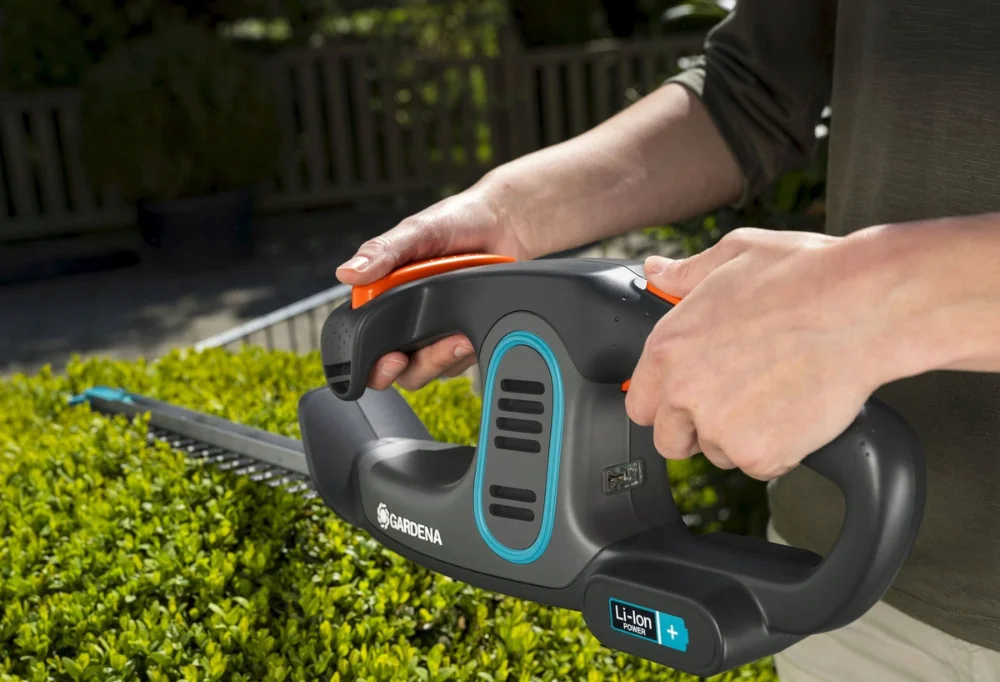
This size can help with everything mentioned above, plus they are usually quieter too, another reason for homeowners to get one of these tiny beauties!
Best Lightweight Hedge Trimmer: Lethal Feather
Now, what if you don’t want your arms to be exhausted from working with the tool all day?
Then you need something that was designed to be light and comfortable and will help you cut those hedges without having to go to the gym five days a week. Usually, electric models should be your choice if weight is one of your concerns. Both corded and cordless ones are fine choices, but if you have an outlet nearby, corded hedge trimmers may be the way to go.

In the end, it just comes down to a balance of power and weight. Think about what exactly you are going to use it for, and pick a tool that matches your needs while being lighter than its peers.
Best Hedge Trimmer for the Money: Better Get the Value
The best option for the money really depends on what you need and what your priority is. Sometimes by getting the most affordable option, you are actually wasting money. Your focus should be on getting the best value for it. But how do you determine this “value”?
Well, let’s look at the options we are familiar with:
- Corded Electric Hedge Trimmer: Even though they are usually the cheapest option, they come with the problems and drawbacks we’ve already talked about.
- Cordless Electric Hedge Trimmer: They’re the middle of the pack when it comes to cost. But, you have to factor in the cost of battery replacement, since batteries don’t hold charge as well as they used to after some time.
- Gas-powered Hedge Trimmer: You already know that these are the most powerful options, and that also makes them the most expensive ones. It doesn’t even end there; they need routine maintenance, like oil changes, air filter cleaning, and stuff you’re aware of by now, which will definitely add to the price tag. Now, with how strong they are, that price tag may be well worth it, but that’s for you to decide.
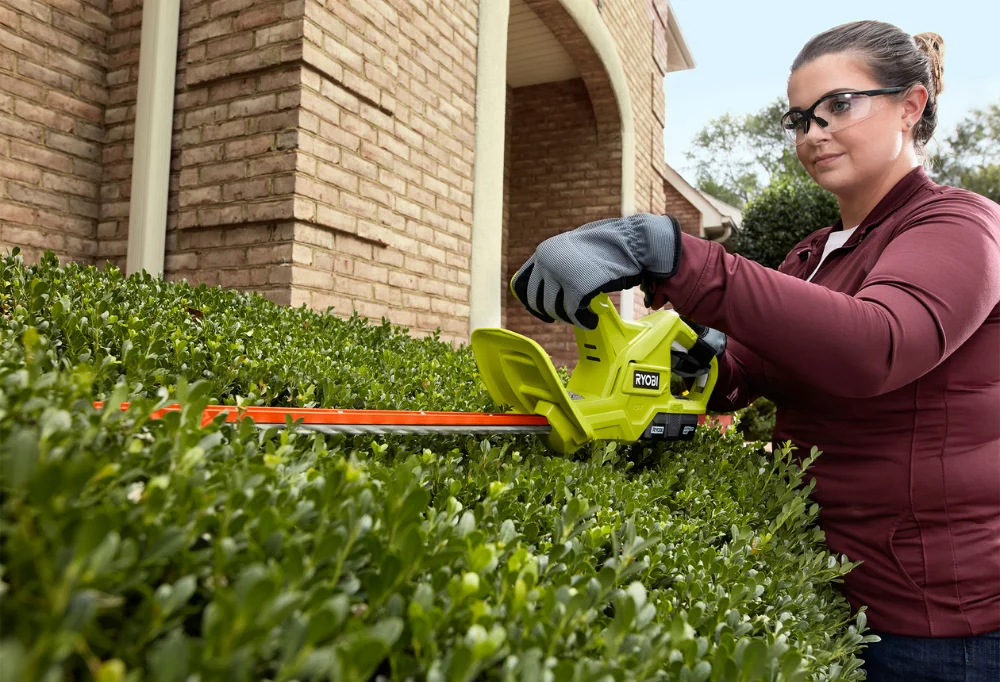
Something that a lot of people do when it comes to shopping for tools is focusing on the upfront cost. You look at a cheap trimmer and think that it’s a great deal, but you need to also think about the total cost of ownership over time. It may not end at the purchase itself; think about replacement parts, or just the maintenance, which may add up to a lot.
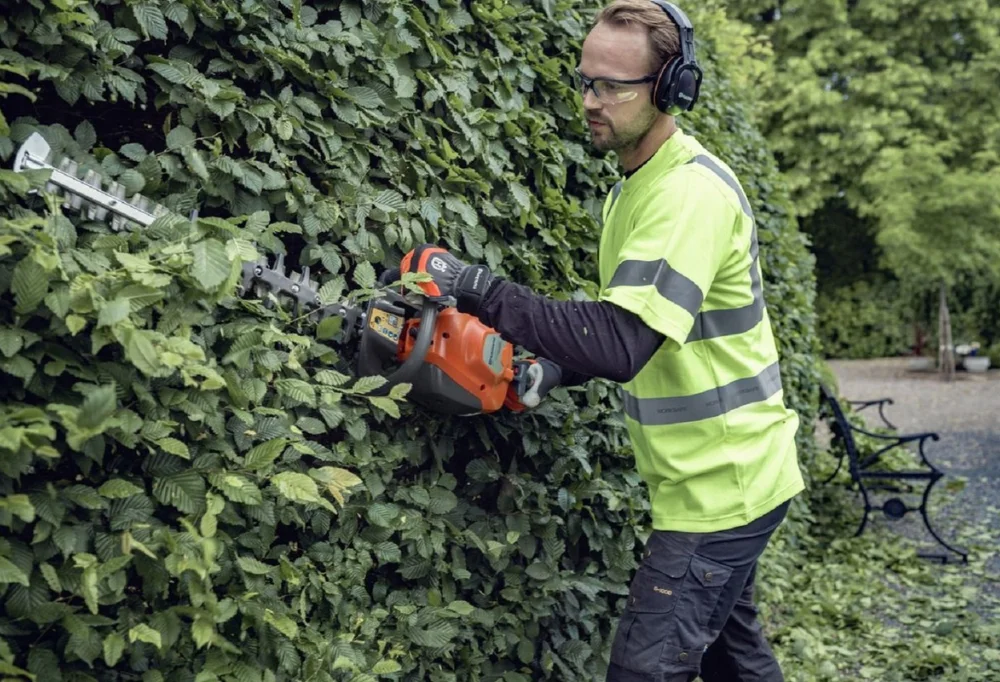
Best Professional Hedge Trimmer: Need All the Power
If you have large landscaping projects, deal with thick branches and dense hedges, or use your tool every day, a normal hedge trimmer will not last a week in your hands. You definitely need a professional hedge trimmer. But what exactly makes it “professional”?
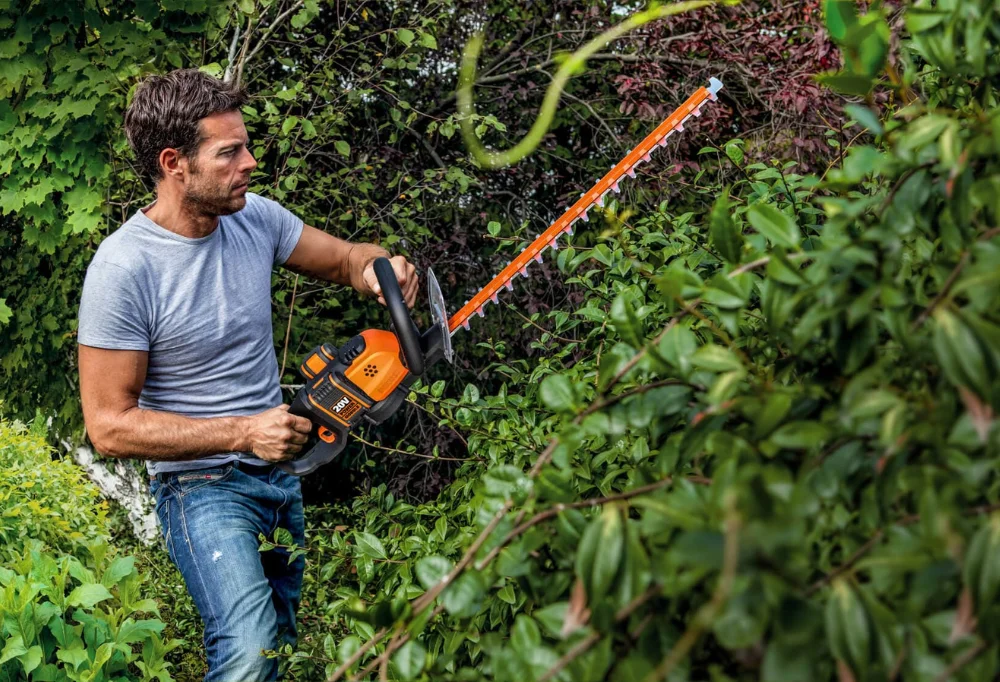
For starters, they are more powerful than your typical hedge trimmer, they are built from materials that are tougher, and they are going to last you a long time. They usually have extra features too, like special blades, industrial-level motors, or vibration dampening in the handles. The word “professional” may even mean a longer blade!
As has been the story of this article, consider that gas models are still the strongest, followed closely by corded ones. Cordless hedge trimmers are quickly catching up as well!
When looking for a professional hedge trimmer, you may want to look at tools from STIHL, Husqvarna, Echo, and Ronix. These are trusted brands with a great reputation in the market to back them up.
Not only have hedge trimmers made landscaping easier, they’ve made it actually enjoyable. The process has been transformed into something you would be excited about, all due to the invention of this one type of tool. That’s something to be thankful for, but we also thank you for reading our article about them! Hope you pick the one that matches your exact needs!
FAQs:
What is the best wattage for a hedge trimmer?
There isn’t really a “best” wattage, but for electric hedge trimmers, it usually ranges from 460 watts to 900 watts.
What features should I look for in a hedge trimmer?
The power source, hedge size and type you are dealing with, blade length, weight and comfort, and safety features.

Arvin
13 July 2024
